From the Trenches
Common Ground
By MARLEY BROWN
Monday, April 10, 2017
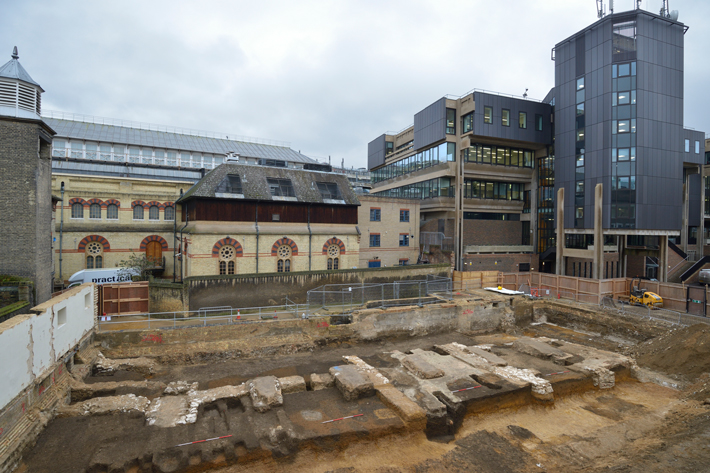
Archaeologists from the Cambridge Archaeological Unit have uncovered an Augustinian friary that occupied what is now Cambridge University property from the 1280s to 1538. In addition to buildings and artifacts, they have discovered nearly 40 burials. These will be analyzed as part of an ongoing project that compares human remains from throughout the city, including around 400 skeletons found at Cambridge’s Hospital of St. John in 2010. It will be interesting, site director Craig Cessford says, “to know if the friars had different diets or origins, were healthier, or lived longer than the rest of the Cambridge population.”
Aurignacian School of Art
By ZACH ZORICH
Monday, April 10, 2017
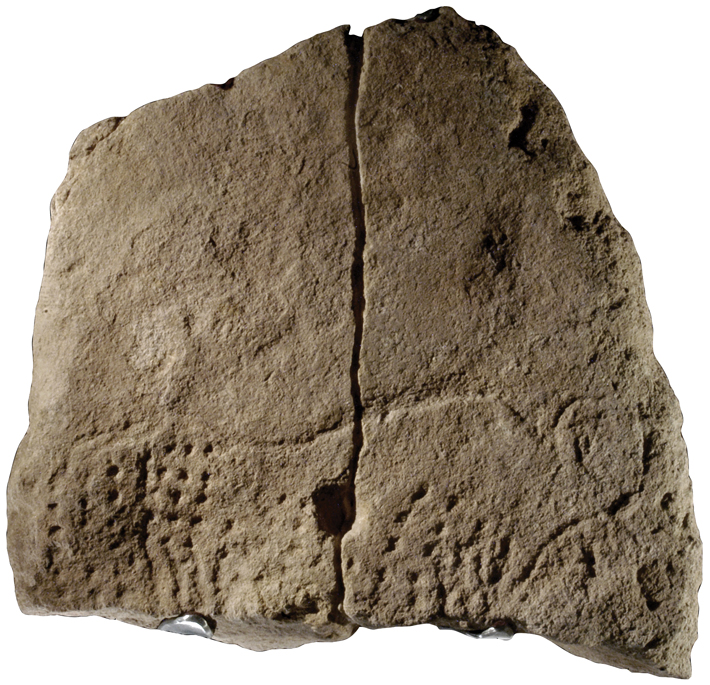 New excavations at Abri Blanchard in southwestern France have uncovered a limestone block engraved with a series of dots and the image of an aurochs, a wild ancestor of modern cattle. Pieces of bone found with the artifact were radiocarbon dated to 33,000 years ago, the period when the Aurignacian people, Europe’s first anatomically modern humans, made the first representational artwork. In addition to the aurochs tablet, the research team reanalyzed 38 engraved limestone blocks that had been found at Abri Blanchard between 1910 and 1912. One of those tablets was decorated with a feline figure that was drawn using the same distinctive technique that an artist used for a painting of a feline at Chauvet Cave, about 200 miles away. While some techniques are shared between such early artistic sites, there are interesting differences, too. Randall White of New York University says, “Each region had its own particular medium of expression: engraving in southwestern France, miniature sculpture in Germany, and deep cave painting in southeastern France.”
New excavations at Abri Blanchard in southwestern France have uncovered a limestone block engraved with a series of dots and the image of an aurochs, a wild ancestor of modern cattle. Pieces of bone found with the artifact were radiocarbon dated to 33,000 years ago, the period when the Aurignacian people, Europe’s first anatomically modern humans, made the first representational artwork. In addition to the aurochs tablet, the research team reanalyzed 38 engraved limestone blocks that had been found at Abri Blanchard between 1910 and 1912. One of those tablets was decorated with a feline figure that was drawn using the same distinctive technique that an artist used for a painting of a feline at Chauvet Cave, about 200 miles away. While some techniques are shared between such early artistic sites, there are interesting differences, too. Randall White of New York University says, “Each region had its own particular medium of expression: engraving in southwestern France, miniature sculpture in Germany, and deep cave painting in southeastern France.”
Bronze Age Bling
By MARLEY BROWN
Monday, April 10, 2017
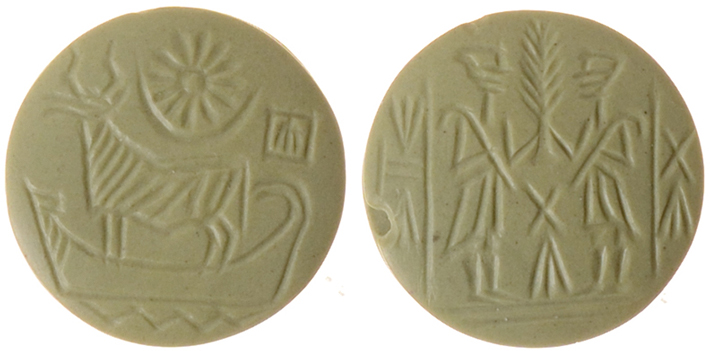
On a windblown island in the Persian Gulf, archaeologists have found a 3,500-year-old jewelry workshop that may hold secrets to the collapse and rebirth of a major trade network. By 2100 B.C., Failaka—now part of Kuwait—was home to the Dilmun culture, a seafaring society whose trade economy fueled the cities of Bronze Age Mesopotamia, or present-day Iraq (“Archaeology Island,” March/April 2013).
Suddenly, around 1730 B.C., the Dilmun trade network collapsed. Cities and temples were abandoned, leading to a period scholars know little about. Now, a team led by researchers from Denmark’s Moesgaard Museum has uncovered fragments of semiprecious stones not native to the island and likely imported from India and Pakistan. “The presence of carnelian and jasper on Failaka indicates that shipping through the Gulf had picked up [a few hundred years later],” says Flemming Højlund, senior scientist and curator at the museum. “It indicates that Dilmun had emerged again as a political entity.”
Squeezing History from a Turnip
By ERIC A. POWELL
Monday, April 10, 2017
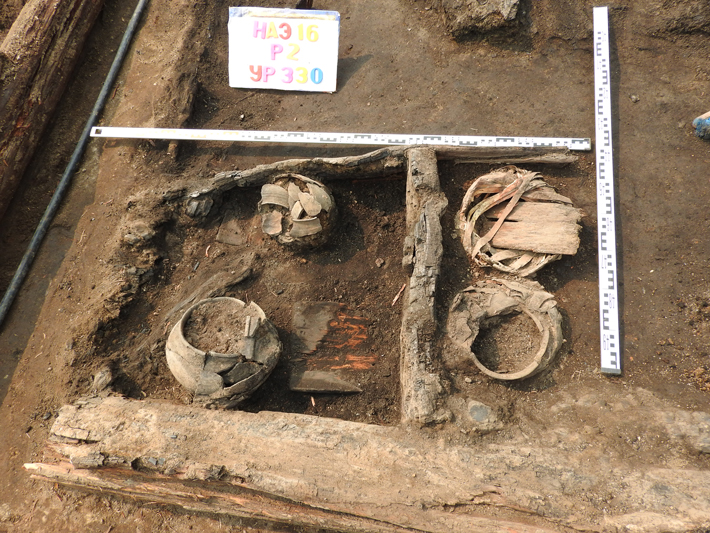
Founded in 1594, the garrison town of Tara was one of the first Russian settlements in Siberia. Archaeologists led by Tomsk State University’s Maria Chernaya are now discovering what life was like there for the earliest Russian pioneers. In addition to wooden fortifications, the team has unearthed the remains of burned log houses that held toys, chess pieces, leather shoes, and knitted stockings that show that life on the Siberian frontier wasn’t as austere as some might imagine. Chernaya says the most unexpected discovery was a clay pot containing a charred turnip. “It was likely part of the winter stocks, so the house probably burned in the winter or spring.” She thinks the fire must have started just as someone was preparing to cook the root vegetable for a meal.
A Cornucopia of Condiments
By DANIEL WEISS
Monday, April 10, 2017
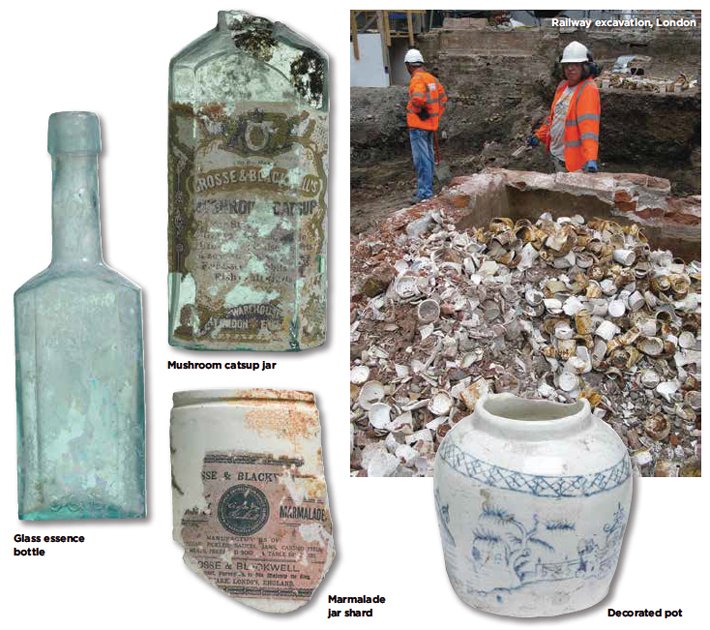
More than 13,000 jars and ceramic pots that once held jams and other condiments from the Victorian era were unearthed during construction of a new railway station on Tottenham Court Road in London’s West End. The containers—four tons in all—were found in a cistern at the site of a Crosse & Blackwell factory and warehouse that operated from 1830 until 1921.
The cistern probably held water used to provide steam power and was rendered unnecessary due to renovations carried out in the 1870s, according to Nigel Jeffries, an archaeologist with Museum of London Archaeology. “I think it was a very swift accumulation,” he says. “The cistern was probably filled over the course of a couple of weeks.” Most of the containers appear to have been discarded intact, and the labels of many remain legible. The range of condiments represented—from marmalades and jams to mushroom catsup, piccalilli, and chutneys—illustrate how once-conventional British tastes at the time were broadening to include flavors from India.
Advertisement
Advertisement
IN THIS ISSUE
Features
The Wall at the End of the Empire
The Blackener’s Cave
After the Battle
Letter from Greenland
From the Trenches
Scroll Search
Off the Grid
A Cornucopia of Condiments
Bronze Age Bling
Squeezing History from a Turnip
Aurignacian School of Art
Common Ground
Standing Still in Beringia?
The Vikings’ Wide Reach
Close Quarters
The Third Reich’s Arctic Outpost
The Buddha of the Lake
World Roundup
Maya land sharks, exotic libations in Ghana, Viking toy ship, Abu Dhabi’s Neolithic building boom, and the world’s oldest silk
Artifact
How the Maya kings made it rain
Advertisement

Recent Issues
-
 May/June 2024
May/June 2024
-
 March/April 2024
March/April 2024
-
 January/February 2024
January/February 2024
-
 November/December 2023
November/December 2023
-
 September/October 2023
September/October 2023
-
 July/August 2023
July/August 2023
-
 May/June 2023
May/June 2023
-
 March/April 2023
March/April 2023
-
 January/February 2023
January/February 2023
-
 November/December 2022
November/December 2022
-
 September/October 2022
September/October 2022
-
 July/August 2022
July/August 2022
-
 May/June 2022
May/June 2022
-
 March/April 2022
March/April 2022
-
 January/February 2022
January/February 2022
-
 November/December 2021
November/December 2021
-
 September/October 2021
September/October 2021
-
 July/August 2021
July/August 2021
-
 May/June 2021
May/June 2021
-
 March/April 2021
March/April 2021
-
 January/February 2021
January/February 2021
-
 November/December 2020
November/December 2020
-
 September/October 2020
September/October 2020
-
 July/August 2020
July/August 2020
-
 May/June 2020
May/June 2020
-
 March/April 2020
March/April 2020
-
 January/February 2020
January/February 2020
-
 November/December 2019
November/December 2019
-
 September/October 2019
September/October 2019
-
 July/August 2019
July/August 2019
-
 May/June 2019
May/June 2019
-
 March/April 2019
March/April 2019
-
 January/February 2019
January/February 2019
-
 November/December 2018
November/December 2018
-
 September/October 2018
September/October 2018
-
 July/August 2018
July/August 2018
-
 May/June 2018
May/June 2018
-
 March/April 2018
March/April 2018
-
 January/February 2018
January/February 2018
-
 November/December 2017
November/December 2017
-
 September/October 2017
September/October 2017
-
 July/August 2017
July/August 2017
-
 May/June 2017
May/June 2017
-
 March/April 2017
March/April 2017
-
 January/February 2017
January/February 2017
-
 November/December 2016
November/December 2016
-
 September/October 2016
September/October 2016
-
 July/August 2016
July/August 2016
-
 May/June 2016
May/June 2016
-
 March/April 2016
March/April 2016
-
 January/February 2016
January/February 2016
-
 November/December 2015
November/December 2015
-
 September/October 2015
September/October 2015
-
 July/August 2015
July/August 2015
-
 May/June 2015
May/June 2015
-
 March/April 2015
March/April 2015
-
 January/February 2015
January/February 2015
-
 November/December 2014
November/December 2014
-
 September/October 2014
September/October 2014
-
 July/August 2014
July/August 2014
-
 May/June 2014
May/June 2014
-
 March/April 2014
March/April 2014
-
 January/February 2014
January/February 2014
-
 November/December 2013
November/December 2013
-
 September/October 2013
September/October 2013
-
 July/August 2013
July/August 2013
-
 May/June 2013
May/June 2013
-
 March/April 2013
March/April 2013
-
 January/February 2013
January/February 2013
-
 November/December 2012
November/December 2012
-
 September/October 2012
September/October 2012
-
 July/August 2012
July/August 2012
-
 May/June 2012
May/June 2012
-
 March/April 2012
March/April 2012
-
 January/February 2012
January/February 2012
-
 November/December 2011
November/December 2011
-
 September/October 2011
September/October 2011
-
 July/August 2011
July/August 2011
-
 May/June 2011
May/June 2011
-
 March/April 2011
March/April 2011
-
 January/February 2011
January/February 2011
Advertisement






